News
The Making of Cujo: Author Lee Gambin Talks New Book
Based on Stephen King’s 1981 novel, the 1983 rabid dog horror film Cujo was just one of three King film adaptations to arrive that years. Cujo was joined by Christine, and the best King film adaptation in the decade, The Dead Zone. A modest box office success, Cujo has, like so many genre films from the 1980s, enjoyed an enthusiastic during its post-theatrical afterlife, which has spanned over a third of a century.
Now author and film historian Lee Gambin has written a book, titled Nope, Nothing Wrong Here: The Making of Cujo, which details the making of the film. I had the chance to talk to Gambin about his reasons for writing this book, which will be published by BearManor Media. The book can be preordered at the publisher’s website.

DG: What inspired you to write a book about the making of the film Cujo?
LG: I have always loved the film – and the book. I feel that the movie is an incredibly well made, tight, solid motion picture and on top of that, one thing I really admire about it, is its complexity hidden within the very straight forward deceptively “simplistic” story. I wanted to examine all the aspects of this in the book, and on top of that of course find out everything about the production. Also, a lot of work I had done leading up to starting work on the book had something to do with Cujo. For example, I wrote a book on eco-horror movies called Massacred By Mother Nature: Exploring the Natural Horror Film, and in that I write on Cujo. And then there was/is my connection to Dee Wallace – during very early days of mapping out the book I worked with Dee as part of Monster Fest here in Melbourne. So these elements all helped pave the way to working on this book which is an exhaustive exploration into the film – from a “making of” perspective with an academic angle as well.
DG: What was your plan for writing the book, and how did this evolve and unfold as you moved deeper into the writing process?
LG: I had just completed a book all about the making of The Howling, and that really dictated how I set out to write the book on Cujo. The way I structured The Howling book was to go scene by scene and integrate quotes from the mammoth amount of interviews I got for it. I decided this was a beautiful way to go – to really dissect and critically examine the narrative makeup, thematic ingredients, character and the mythic qualities of the film as well as giving a voice to the people who worked on the film. Cujo is exactly set up in the same way.
DG: What are the themes of Cujo that you wanted to explore with this book?
LG: There are so many incredible themes weaved within the fabric of Cujo – there is the concept of the disturbance in nature, domestic unrest, infidelity, human suffrage, alienation, the Three Days of Darkness, the “woman in the storm” archetype, redemption, the monster imagined and real. I mean, this film has so much depth and intelligence, and there is truly a lot to explore. Outside of all that, there are the dozens of interviews that are truly candid and generous, so the production element to the book is massive. I really do feel this is an ultimate in making of books – I’m pretty proud of it. I really tried to leave no stone unturned.
DG: What was the biggest challenge in writing the book?
LG: The fact that there were a lot of people who are no longer with us that would have been amazing to have on board. For example, the screenwriter Barbara Turner passed away the month before I started work on the book (as in gathering the interviews), and that was sad because she was so integral. Also, the editor, Neil Machlis, who did such a superb job, is no longer alive, so it would have been amazing to have his input. But I feel over thirty interviews with a bunch of Cujo alumni is healthy to say the least!
DG: Whom did you interview for the book?
LG: Dee Wallace, Lewis Teague, Danny Pintauro, Daniel Hugh Kelly – so many people. Gary Morgan is a wonderful storyteller; he was the guy in the dog suit! Also Teresa Ann Miller shared stories about her father, animal trainer Karl Lewis Miller, so it was lovely to hear all about the St. Bernards used for the film. Robert and Kathy Clark are in there, and they were part of the SFX team, so there is some excellent stuff discussing the animatronic dog, the puppet head, the dog head that would be used to propel into the Pinto door and so much more. I also interviewed people such as Danny Pintauro’s mother, who was on set throughout the shoot, people involved with the film before Lewis Teague came on board such as originally assigned director Peter Medak (which is the first ever time he has talked about this) and his DOP Tony Richmond. There are a lot of people in here.

DG: Tell me something about the film that I wouldn’t know unless I read this book?
LG: Oh there are a lot of things that I am sure even the most hardened fan wouldn’t know. One thing that really surprised me was the fact that there was a deleted scene that actor Robert Craighead talked to me about. It occurs just before Kaiulani Lee’s character tells Ed Lauter that she has won the lottery and moments before Ed finds the engine hoist in his garage. Craighead plays a delivery man who, along with his partner, drops off the machinery, only to come across an agitated Cujo who leaps up and scares them. This is before the rabies virus has really gotten its grip on the poor pooch, so he is still confused by it all. Craighead told me that Lewis Teague thought that the scene played out to “light”, and that it would throw the audience, seeing that Cujo is such a straight film with a steady serious tone. The scene had Craighead and his partner speed off in their delivery truck, one of them flipping the bird to the St Bernard. I have a great still from it that will be featured in the book.
DG: Lee, when you look back at the writing of this book, is there one memory – or one anecdote that was given to you by an interview subject – that stands out in your mind when you recall this process?
LG: Good question – but in all honesty, most of the interviewees have provided amazing insight that will stick with me forever. One thing that I have to say that means a lot to me is the fact that in some small way, I have bridged a thirty plus year gap between Peter Medak and Lewis Teague. Medak told me that he refused to watch the film after he was fired from the project (this was the only film he was ever fired from – he had walked off movies such as major projects involving the likes of Barbra Streisand and Sean Connery, but this was the first he was fired from). But then in the evening before I interviewed him, he watched the film and was completely impressed. When I talked to him, he told me to pass on congratulations to Lewis Teague. I did this, but I did something more. I introduced the two men, and all resentment was put to rest after all these years. It was pretty special.
DG: Lee, when I think of Cujo, I think of the crowd of Stephen King film adaptations that appeared from the early 1980s on. Cujo was just one of the three King adaptations that were released in 1983, along with Christine, and, of course, The Dead Zone, which many, including myself, believe is one of the best of the King film adaptations. Question: What do you think sets Cujo apart from the rest of the King film adaptations from this time period?
LG: It – 1983 – was a wonderful year for King adaptations, most certainly. There were three superb directors working on these films – John Carpenter, David Cronenberg and, of course, Lewis Teague – as well as brilliant horror affiliates on each film such as Debra Hill and Dee Wallace etc. But the thing that separates Cujo from films like Christine and The Dead Zone is the fact that it is a horror film grounded in reality. Cujo is one of those rare Stephen King stories (Misery comes to mind also) that doesn’t rely on supernatural horror – there is no telekinetic teen or haunted house or vampires or killer cars. Instead it is simply a story about a woman trapped by her own personal situation and then eventually trapped by a rabid 200 pound St. Bernard.

DG: Lee, besides your interviews, what additional materials did you gather for this book, namely pictures, and how did you find all of this?
LG: Lots of research was involved, but most of it was a case of sourcing materials from interviewees themselves.
DG: Lee, every film production has a story, an overarching conflict or rhythm that defined the making of the film. Question: What was the mood like during the filming, between the cast and crew, and were there any major conflicts that arose during the filming?
LG: Cujo was a very, very complicated shoot. There were tensions, arguments galore, a lot of miscommunication and hostility. However, on the flipside of that, there was a lot of love, support, solidarity, care, compassion and unity. I guess it depends on whom you ask! A lot of the interviewees seem to have an issue with DOP Jan de Bont – who never responded to requests, and therefore is someone actively missing from the book. It was amazing to hear from both aspects of the argument and to hear how different people preferred to work – for example, Daniel Hugh Kelly hated the fact that Barbara Turner’s screenplay was being pushed aside for Don Carlos Dunaway’s rewrites, while Dee Wallace preferred the “less is more” approach to the film in regards to the dialogue aspect.
DG: Lee, was there any thought given to killing off the Tad character in the film, in keeping with the book, and were there any other story elements that were discarded prior to the start of filming?
LG: Dee Wallace had a lot of dramaturgical input for this production and someone as generous and perceptive as Lewis Teague took this on board. One of those things was the killing of Tad. She was adamant that the child not die, and Stephen King himself agreed. His original draft for the screenplay had Tad survive the siege. As far as other story elements, there were primarily two that were dropped – one was the link between The Dead Zone and Cujo where the dog would be “considered” to be a reincarnation of the Frank Dodd character (the killer in The Dead Zone). This was toyed around with and plotted by Barbara Turner in her draft of the screenplay. Peter Medak loved this idea. The two of them worked on concepts together.
Turner’s screenplay would therefore somewhat have a supernatural element to it. This is something that Teague would drop completely when he took over the film. When Medak was fired, Turner was so hurt that she told the studio to change her name in the credits to Lauren Currier, and her work on the supernatural subplot was completely omitted. However, all of the siege sequence is all of her writing.
The second major story element that was made miniscule in the final film was the relationship between Ed Lauter and Kaiulani Lee’s characters – Joe and Charity Camber. Plus there was stuff originally in there involving the cereal scare and so forth. But yes, the film became much leaner in final execution.
DG: Ultimately, Lee, what is the story of this book, the impression that you think readers will be left with, in regards to the film, the making of the film, and the time period in which it was made?
LG: I think anyone interested in film history will love hearing the stories from the set. I think it is a really amazing condensation of mixed feelings and a perfect example of the creative process, the creative experience, and how artists tick.
Preorder Nope, Nothing Wrong Here: The Making of Cujo here.
Listen to the 'Eye On Horror Podcast'

Editorial
Why You May NOT Want To Go In Blind Before Watching ‘The Coffee Table’

You might want to prepare yourself for some things if you plan to watch The Coffee Table now rentable on Prime. We aren’t going to go into any spoilers, but research is your best friend if you are sensitive to intense subject matter.
If you don’t believe us, maybe horror writer Stephen King might convince you. In a tweet he published on May 10, the author says, “There’s a Spanish movie called THE COFFEE TABLE on Amazon Prime and Apple+. My guess is you have never, not once in your whole life, seen a movie as black as this one. It’s horrible and also horribly funny. Think the Coen Brothers’ darkest dream.”
There's a Spanish movie called THE COFFEE TABLE on Amazon Prime and Apple+. My guess is you have never, not once in your whole life, seen a movie as black as this one. It's horrible and also horribly funny. Think the Coen Brothers' darkest dream.
— Stephen King (@StephenKing) May 10, 2024
It is hard to talk about the film without giving anything away. Let’s just say there are certain things in horror movies that are generally off the, ahem, table and this film crosses that line in a big way.
The very ambiguous synopsis says:
“Jesus (David Pareja) and Maria (Estefanía de los Santos) are a couple going through a difficult time in their relationship. Nevertheless, they have just become parents. To shape their new life, they decide to buy a new coffee table. A decision that will change their existence.”
But there is more to it than that, and the fact that this might be the darkest of all comedies is also a little unsettling. Although it is heavy on the dramatic side too, the core issue is very taboo and might leave certain people sick and disturbed.
What’s worse is that it is an excellent movie. The acting is phenomenal and the suspense, masterclass. Compounding that it’s a Spanish film with subtitles so you have to look at your screen; it’s just evil.
The good news is The Coffee Table isn’t really that gory. Yes, there is blood, but it’s used more as just a reference than a gratuitous opportunity. Still, the mere thought of what this family has to go through is unnerving and I can guess many people will turn it off within the first half-hour.
Director Caye Casas has made a great film that might go down in history as one of the most disturbing ever made. You have been warned.
Listen to the 'Eye On Horror Podcast'
Movies
Trailer For Shudder’s Latest ‘The Demon Disorder’ Showcases SFX

It’s always interesting when award-winning special effects artists become directors of horror films. That is the case with The Demon Disorder coming from Steven Boyle who has done work on The Matrix movies, The Hobbit trilogy, and King Kong (2005).
The Demon Disorder is the latest Shudder acquisition as it continues adding high-quality and interesting content to its catalog. The film is the directorial debut of Boyle and he says he is happy that it will become a part of the horror streamer’s library coming fall 2024.
“We are thrilled that The Demon Disorder has reached its final resting place with our friends at Shudder,” said Boyle. “It’s a community and fanbase that we hold in the highest esteem and we couldn’t be happier to be on this journey with them!”
Shudder echoes Boyle’s thoughts about the film, emphasizing his skill.
“After years of a creating a range of elaborate visual experiences through his work as a special effects designer on iconic films, we’re thrilled to give Steven Boyle a platform for his feature length directorial debut with The Demon Disorder,” said Samuel Zimmerman, Head of Programming for Shudder. “Full of impressive body horror that fans have come to expect from this master of effects, Boyle’s film is an engrossing story about breaking generational curses that viewers will find both unsettling and amusing.”
The movie is being described as an “Australian family drama” that centers on, “Graham, a man haunted by his past since the death of his father and the estrangement from his two brothers. Jake, the middle brother, contacts Graham claiming that something is horribly wrong: their youngest brother Phillip is possessed by their deceased father. Graham reluctantly agrees to go and see for himself. With the three brothers back together, they soon realize they are unprepared for the forces against them and learn that the sins of their past will not stay hidden. But how do you defeat a presence that knows you inside and out? An anger so powerful it refuses to stay dead?”
The movie stars, John Noble (The Lord of the Rings), Charles Cottier, Christian Willis, and Dirk Hunter.
Take a look at the trailer below and let us know what you think. The Demon Disorder will begin streaming on Shudder this fall.
Listen to the 'Eye On Horror Podcast'
Editorial
Remembering Roger Corman the Independent B-Movie Impresario

Producer and director Roger Corman has a movie for every generation going back about 70 years. That means horror fans aged 21 and older have probably seen one of his films. Mr. Corman passed away on May 9 at the age of 98.
“He was generous, open-hearted, and kind to all those who knew him. A devoted and selfless father, he was deeply loved by his daughters,” his family said on Instagram. “His films were revolutionary and iconoclastic, and captured the spirit of an age.”
The prolific filmmaker was born in Detroit Michigan in 1926. The art of making films swayed his interest in engineering. So, in the mid-1950s he turned his attention to the silver screen by co-producing the film Highway Dragnet in 1954.
A year later he would get behind the lens to direct Five Guns West. The plot of that film sounds like something Spielberg or Tarantino would make today but on a multi-million dollar budget: “During the Civil War, the Confederacy pardons five criminals and sends them into Comanche-territory to recover Union-seized Confederate gold and capture a Confederate turncoat.”
From there Corman made a few pulpy Westerns, but then his interest in monster movies emerged starting with The Beast With a Million Eyes (1955) and It Conquered the World (1956). In 1957 he directed nine movies that ranged from creature features (Attack of the Crab Monsters) to exploitative teenage dramas (Teenage Doll).
By the 60s his focus turned mainly to horror movies. Some of his most famous of that period were based on Edgar Allan Poe’s works, The Pit and the Pendulum (1961), The Raven (1961), and The Masque of the Red Death (1963).
During the 70s he did more producing than directing. He backed a wide array of films, everything from horror to what would be called grindhouse today. One of his most famous films from that decade was Death Race 2000 (1975) and Ron Howard’s first feature Eat My Dust (1976).
In the following decades, he offered many titles. If you rented a B-movie from your local video rental place, he likely produced it.
Even today, after his passing, IMDb reports that he has two upcoming movies in post: Little Shop of Halloween Horrors and Crime City. Like a true Hollywood legend, he is still working from the other side.
“His films were revolutionary and iconoclastic, and captured the spirit of an age,” his family said. “When asked how he would like to be remembered, he said, ‘I was a filmmaker, just that.'”
Listen to the 'Eye On Horror Podcast'
-
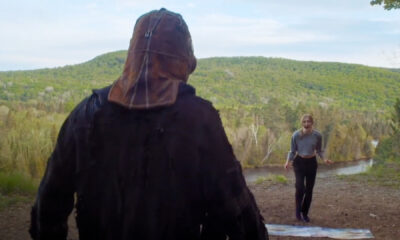
 News6 days ago
News6 days ago“In a Violent Nature” So Gory Audience Member Throws Up During Screening
-
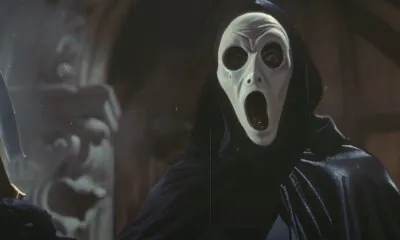
 Lists7 days ago
Lists7 days agoUnbelievably Cool ‘Scream’ Trailer But Re-Imagined As A 50s Horror Flick
-

 Movies7 days ago
Movies7 days agoA24 Reportedly “Pulls Plug” On Peacock’s ‘Crystal Lake’ Series
-
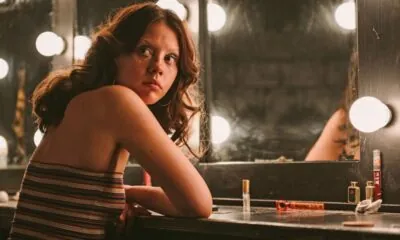
 Movies7 days ago
Movies7 days agoTi West Teases Idea For Fourth Film In The ‘X’ Franchise
-

 Shopping7 days ago
Shopping7 days agoNew Friday the 13th Collectibles Up For Pre-Order From NECA
-

 Movies5 days ago
Movies5 days agoShelter in Place, New ‘A Quiet Place: Day One’ Trailer Drops
-
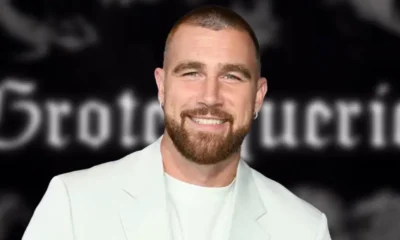
 News6 days ago
News6 days agoTravis Kelce Joins Cast on Ryan Murphy’s ‘Grotesquerie’
-
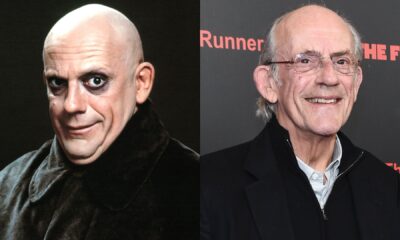
 News7 days ago
News7 days ago‘Wednesday’ Season Two Drops New Teaser Video That Reveals Full Cast


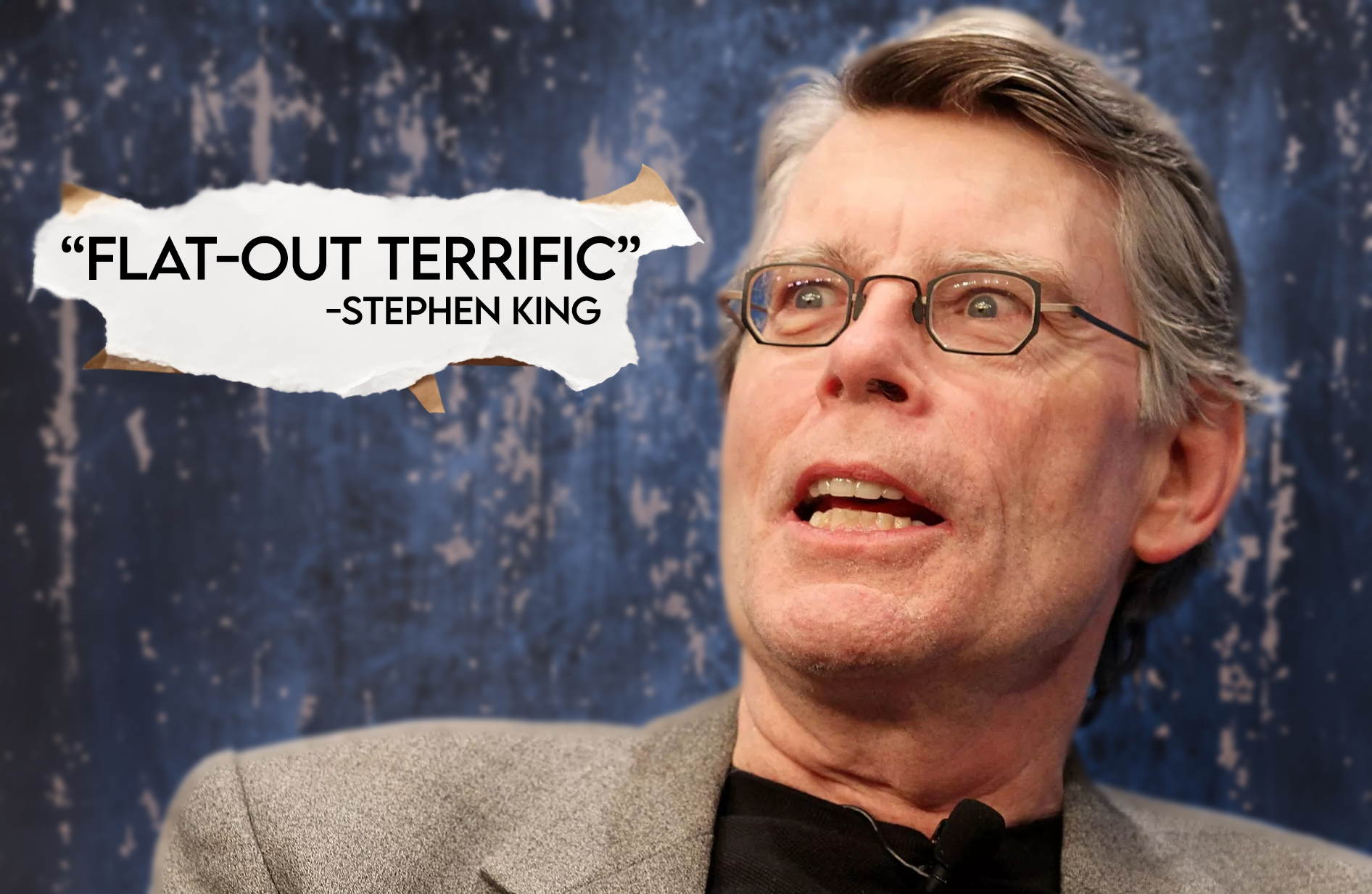
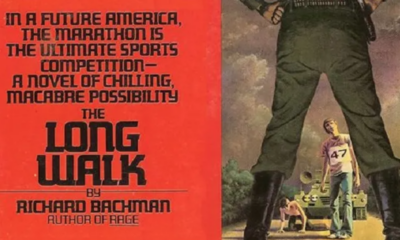



















You must be logged in to post a comment Login